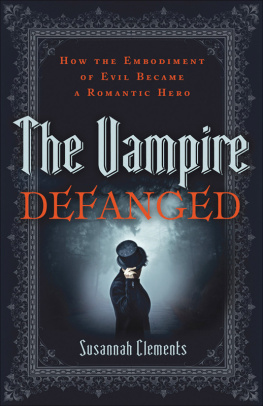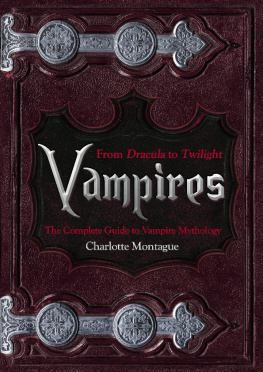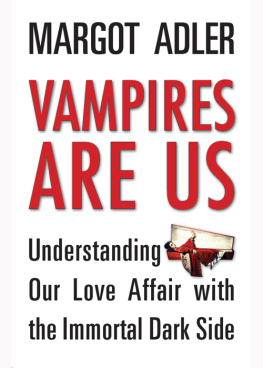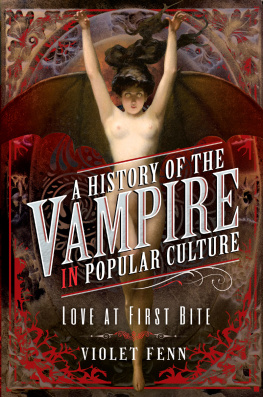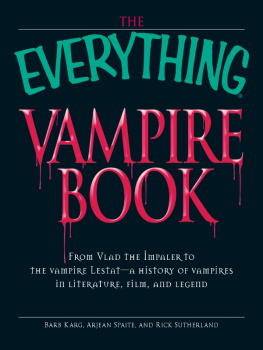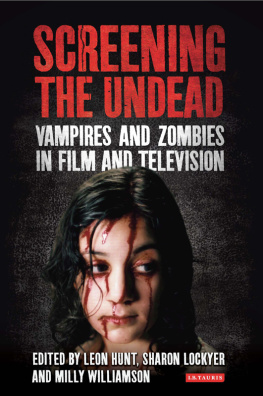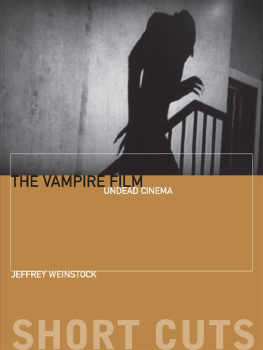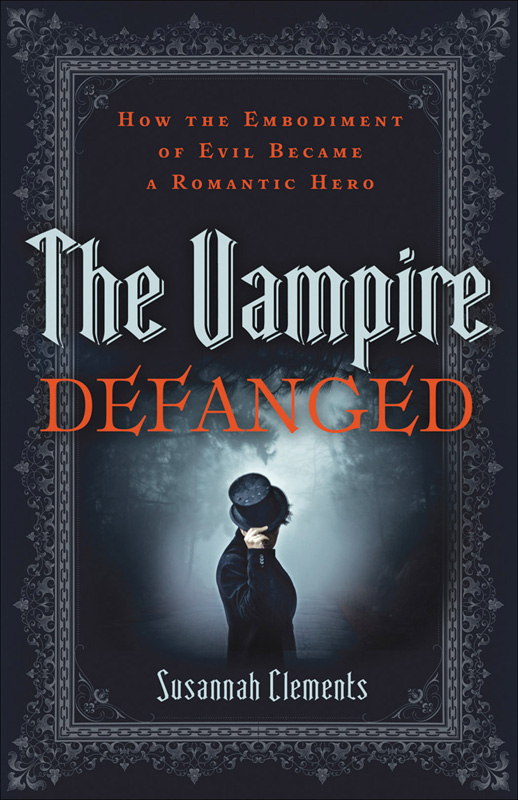2011 by Susannah M. Clements
Published by Brazos Press
a division of Baker Publishing Group
P.O. Box 6287, Grand Rapids, MI 49516-6287
www.brazospress.com
E-book edition created 2011
All rights reserved. No part of this publication may be reproduced, stored in a retrieval system, or transmitted in any form or by any meansfor example, electronic, photocopy, recordingwithout the prior written permission of the publisher. The only exception is brief quotations in printed reviews.
ISBN 978-1-4412-1400-3
Library of Congress Cataloging-in-Publication Data is on file at the Library of Congress, Washington, DC.
Unless otherwise indicated, Scripture is taken from the King James Version of the Bible.
Scripture marked NIV is taken from the HOLY BIBLE, NEW INTERNATIONAL VERSION. NIV. Copyright 1973, 1978, 1984 by Biblica, Inc. Used by permission of Zondervan. All rights reserved worldwide. www.zondervan.com
Why Vampires Matter
I dont think Jesus would mind if somebody was a vampire.
Sookie in First Taste ( True Blood , season 1)
T he vampire is a hit.
In 2009, Twilight Parties were held around the world to celebrate the midnight DVD release of the film based on Stephenie Meyers young adult vampire novel. Teens, tweens, and adults gathered in living rooms, bookstores, and funeral homes to watch Twilight by candelight, drink blood-red punch, and use napkins secured by plastic vampire-teeth rings. Once a creature from our nightmares, the vampire has become a teen idol and can sell books and DVDs by the million.
The popularity of the Twilight books has led to an abundance of imitators, as a quick scan at the young adult shelves of any bookstore will indicate. Teenaged vampires, usually attractive and brooding, run rampant in young adult fiction. And the phenomenon is not limited to the young adult market. Vampires star in a broad range of adult fictionfrom mysteries to romance to erotic novels. Best-selling authors like Laurell K. Hamilton, Charlaine Harris, Christine Feehan, and Sherrilyn Kenyon have popularized the vampire as a sex object and romantic hero. Adaptations of well-known book series have been hitting the theaters and networks. Vampires have filled our televisions, our movie screens, our bookstores, and our computers in online discussion boards and blogs.
Why has popular culture recently been overrun with vampires, and how are Christians supposed to understand it? Vampires would not have become as popular as they have if they didnt mean something to us as a culture. They represent something to ussomething that mattersand that is one of the questions this study seeks to explore. Vampires are more than just monsters to us. They have recurred as a figure in literature and Western culture for the last two centuries, and they go back much further in lore and myth. It is over the last hundred years or so, however, that their portrayal in our culture has morphed from monster to lover, from single-minded villain to complex antihero. The vampire was once held up as the embodiment of evil and temptation, but has now become the ultimate romantic alpha-hero. The Vampire Defanged explores how this transformation occurred and what it means to Christians.
Vampire History
To understand how vampires are portrayed today, it helps to know how and where the legend originated. Anthropologists and historians trace vampire lore back to ancient cultures from all over the world. Cultures as far-ranging as Hebrew, Greek, Roman, Indian, Chinese, Egyptian, and pre-Colombian have their own version of myths and stories featuring blood-sucking or life-sucking demons, evil spirits that can animate dead bodies, and bat gods. The characteristics of what the Western world specifically understands as a vampire come primarily from the folklore of southeastern Europethe Balkan and Slavic cultures specifically. Bram Stoker pulled from a number of different traditions in writing Dracula , but focused on the history and culture of Transylvania. Since Dracula has been so central to our understanding of vampires in the Western tradition, the way we understand the vampire is heavily influenced by folklore from that region.
Because of the wide range of cultures with vampire myths, it is difficult to come up with a universal set of vampire characteristics. The two characteristics that seem to be most common, and the two that are usually sustained in contemporary vampire depictions, are these: vampires drink human blood and vampires are animated corpses, not truly alive. Some of the other common additional characteristics that came from southeastern European folklore are the vampires fear of sunlight, shape-shifting capabilities (often shifting into a wolf or a bat), hypnotic powers, the need to return to their native earth or grave during the day, and death by a wooden stake through the heart. Vampires are also often understood to be afraid of garlic and unable to cross running water.
Once the Catholic Church tradition was integrated into the earlier folklore, the Christian elements were added to the vampire myth, such as aversion to the cross and other holy objects, and the connections between vampires and Satan or his demons. Many scholars speculate that the stories developed in part because of early peoples inability to understand concepts like decomposition and infectionas well as less common phenomena like premature burial. Burying someone who wasnt truly dead might easily convince people from previous centuries that vampires really exist. So the vampire legend as we understand it today is a mixture of primitive beliefs, European folklore, and Christian influences.
Once the stories were developed in folklore, they began to make an appearance in literature. The vampire appeared in a number of eighteenth-century German poems, and those were the inspiration for the nineteenth-century English literary depictions of vampires, like Polidoris The Vampyre (1819), perhaps the first genuine vampire story written in English. Other nineteenth-century vampire stories include Varney the Vampire , which was first released in inexpensive pamphlets called the penny dreadful in the 1840s and featured one of the first examples of a conflicted vampire. A final nineteenth-century example was Sheridan Le Fanus Carmilla (1872), describing a female vampire. As the vampire myth was first turned into fiction, the associations of the vampire with evil and temptation were established, characteristics that have been diminishing gradually since.
Vampire as Metaphor
While a particular contemporary subculture might believe in literal vampires among usthose individuals who identify themselves as vampires in real lifemost people who study or are engaged with vampires do so in a metaphorical sense. We find vampires in our mythology and our fiction, in our film and television. In those contexts, we are attracted to the vampire as metaphor.
Vampires represent something to us as humans. They represent our fears and our desires. The reason they have recurred in our stories over the last hundred years is that vampires are rich enough a metaphor to adapt to cultures changing worldview and interests. We can make a vampire mean what we want it to mean. We can use it for any number of purposes. In her important study of vampires, Our Vampires, Ourselves , Nina Auerbach says that every age embraces the vampire it needs. There is something about the figure of the vampire that attracts us in this metaphorical sense. As a metaphor it hits at the heart of what makes us human. A vampire is a monster that has a human shape, and so it becomes a picture through which we can explore the human condition.

